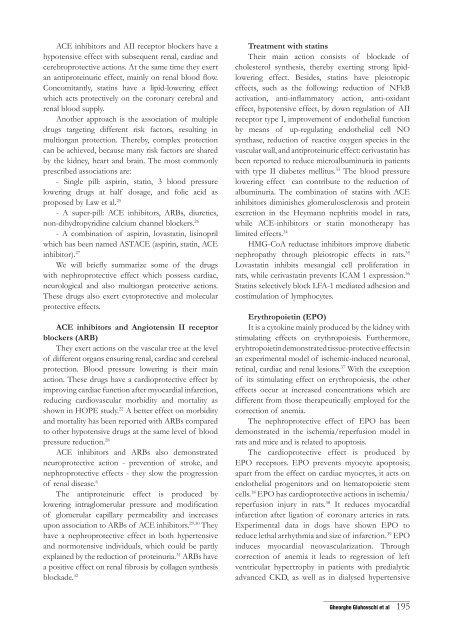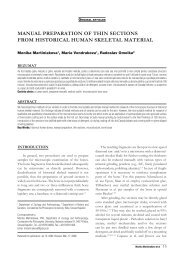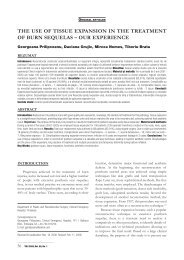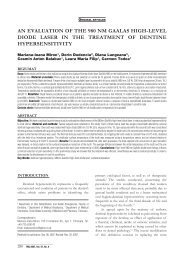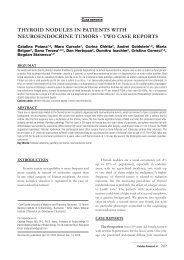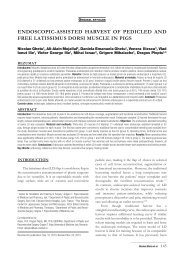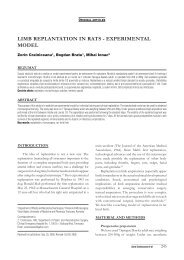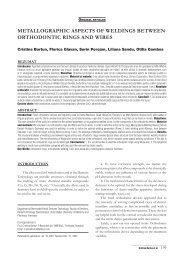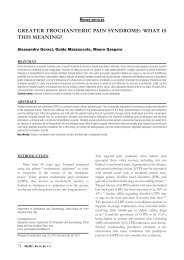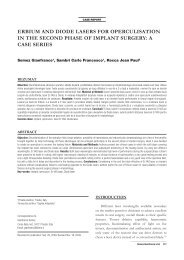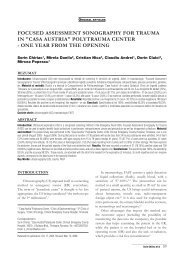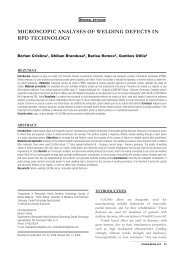nEPHroProtEction, Part oF MULti-orGan ProtEction
nEPHroProtEction, Part oF MULti-orGan ProtEction
nEPHroProtEction, Part oF MULti-orGan ProtEction
You also want an ePaper? Increase the reach of your titles
YUMPU automatically turns print PDFs into web optimized ePapers that Google loves.
ACE inhibitors and AII receptor blockers have a<br />
hypotensive effect with subsequent renal, cardiac and<br />
cerebroprotective actions. At the same time they exert<br />
an antiproteinuric effect, mainly on renal blood flow.<br />
Concomitantly, statins have a lipid-lowering effect<br />
which acts protectively on the coronary cerebral and<br />
renal blood supply.<br />
Another approach is the association of multiple<br />
drugs targeting different risk factors, resulting in<br />
multiorgan protection. Thereby, complex protection<br />
can be achieved, because many risk factors are shared<br />
by the kidney, heart and brain. The most commonly<br />
prescribed associations are:<br />
- Single pill: aspirin, statin, 3 blood pressure<br />
lowering drugs at half dosage, and folic acid as<br />
proposed by Law et al. 25<br />
- A super-pill: ACE inhibitors, ARBs, diuretics,<br />
non-dihydropyridine calcium channel blockers. 26<br />
- A combination of aspirin, lovastatin, lisinopril<br />
which has been named ASTACE (aspirin, statin, ACE<br />
inhibitor). 27<br />
We will briefly summarize some of the drugs<br />
with nephroprotective effect which possess cardiac,<br />
neurological and also multiorgan protective actions.<br />
These drugs also exert cytoprotective and molecular<br />
protective effects.<br />
ACE inhibitors and Angiotensin II receptor<br />
blockers (ARB)<br />
They exert actions on the vascular tree at the level<br />
of different organs ensuring renal, cardiac and cerebral<br />
protection. Blood pressure lowering is their main<br />
action. These drugs have a cardioprotective effect by<br />
improving cardiac function after myocardial infarction,<br />
reducing cardiovascular morbidity and mortality as<br />
shown in HOPE study. 22 A better effect on morbidity<br />
and mortality has been reported with ARBs compared<br />
to other hypotensive drugs at the same level of blood<br />
pressure reduction. 28<br />
ACE inhibitors and ARBs also demonstrated<br />
neuroprotective action - prevention of stroke, and<br />
nephroprotective effects - they slow the progression<br />
of renal disease. 6<br />
The antiproteinuric effect is produced by<br />
lowering intraglomerular pressure and modification<br />
of glomerular capillary permeability and increases<br />
upon association to ARBs of ACE inhibitors. 29,30 They<br />
have a nephroprotective effect in both hypertensive<br />
and normotensive individuals, which could be partly<br />
explained by the reduction of proteinuria. 31 ARBs have<br />
a positive effect on renal fibrosis by collagen synthesis<br />
blockade. 32<br />
Treatment with statins<br />
Their main action consists of blockade of<br />
cholesterol synthesis, thereby exerting strong lipidlowering<br />
effect. Besides, statins have pleiotropic<br />
effects, such as the following: reduction of NFkB<br />
activation, anti-inflammatory action, anti-oxidant<br />
effect, hypotensive effect, by down regulation of AII<br />
receptor type I, improvement of endothelial function<br />
by means of up-regulating endothelial cell NO<br />
synthase, reduction of reactive oxygen species in the<br />
vascular wall, and antiproteinuric effect: cerivastatin has<br />
been reported to reduce microalbuminuria in patients<br />
with type II diabetes mellitus. 33 The blood pressure<br />
lowering effect can contribute to the reduction of<br />
albuminuria. The combination of statins with ACE<br />
inhibitors diminishes glomerulosclerosis and protein<br />
excretion in the Heymann nephritis model in rats,<br />
while ACE-inhibitors or statin monotherapy has<br />
limited effects. 34<br />
HMG-CoA reductase inhibitors improve diabetic<br />
nephropathy through pleiotropic effects in rats. 35<br />
Lovastatin inhibits mesangial cell proliferation in<br />
rats, while cerivastatin prevents ICAM 1 expression. 36<br />
Statins selectively block LFA-1 mediated adhesion and<br />
costimulation of lymphocytes.<br />
Erythropoietin (EPO)<br />
It is a cytokine mainly produced by the kidney with<br />
stimulating effects on erythropoiesis. Furthermore,<br />
eryhtropoietin demonstrated tissue-protective effects in<br />
an experimental model of ischemic-induced neuronal,<br />
retinal, cardiac and renal lesions. 37 With the exception<br />
of its stimulating effect on erythropoiesis, the other<br />
effects occur at increased concentrations which are<br />
different from those therapeutically employed for the<br />
correction of anemia.<br />
The nephroprotective effect of EPO has been<br />
demonstrated in the ischemia/reperfusion model in<br />
rats and mice and is related to apoptosis.<br />
The cardioprotective effect is produced by<br />
EPO receptors. EPO prevents myocyte apoptosis;<br />
apart from the effect on cardiac myocytes, it acts on<br />
endothelial progenitors and on hematopoietic stem<br />
cells. 18 EPO has cardioprotective actions in ischemia/<br />
reperfusion injury in rats. 38 It reduces myocardial<br />
infarction after ligation of coronary arteries in rats.<br />
Experimental data in dogs have shown EPO to<br />
reduce lethal arrhythmia and size of infarction. 39 EPO<br />
induces myocardial neovascularization. Through<br />
correction of anemia it leads to regression of left<br />
ventricular hypertrophy in patients with predialytic<br />
advanced CKD, as well as in dialysed hypertensive<br />
_____________________________<br />
Gheorghe Gluhovschi et al 195


